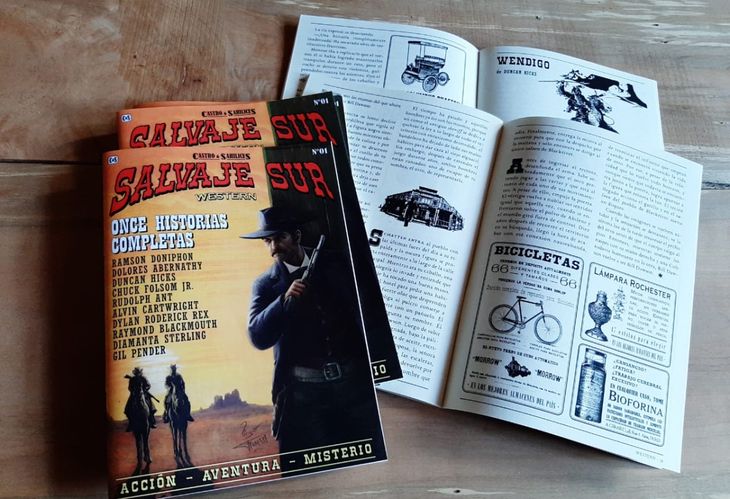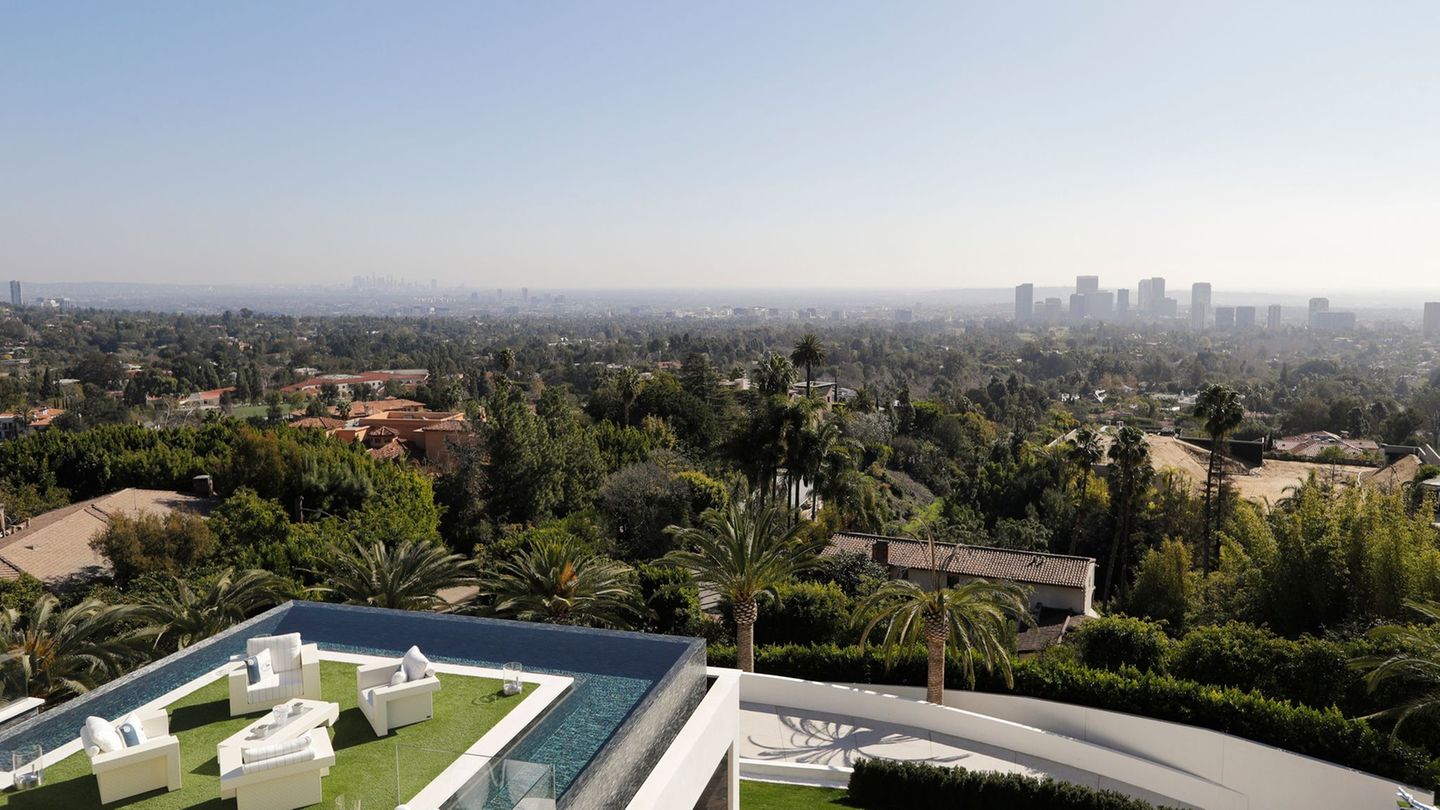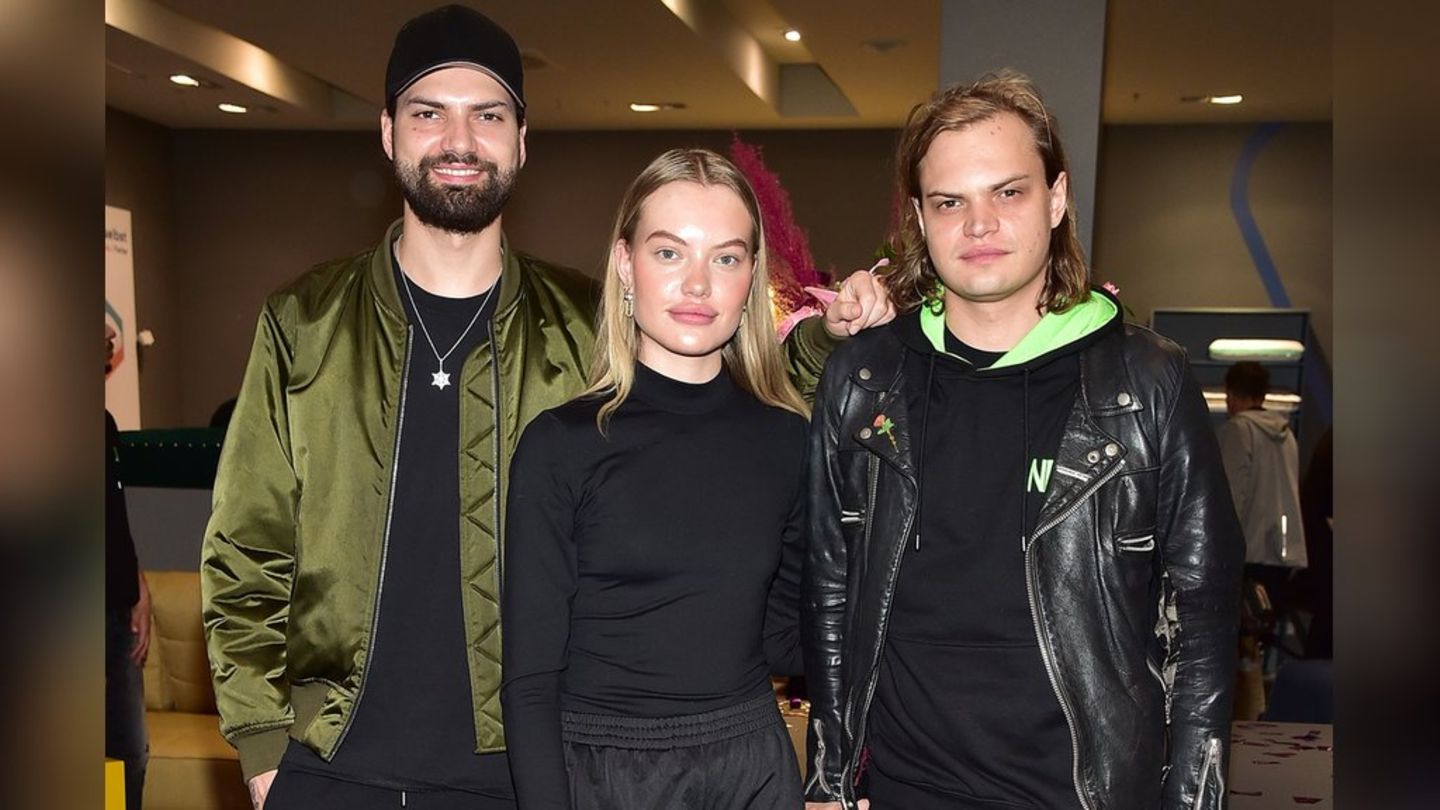at the appointed time
Castro Sahilices identifies his attachment to the western in his childhood, when he discovered the films of the genre in the “Saturdays of super action” cycle. There he met classic directors such as John Ford and Sam Peckinpah, and also the revolutionary Sergio Leone, emblematic figure of the spaghetti western and responsible for “The Good, the Bad and the Ugly”, a film that the writer admits having seen “20 thousand times” with his family. On a literary level, Buffalo Bill was the book that brought him closer to those stories: “I designed my first fanzine when I was 14 years old. There is a leg in that, in the connection with the old publishers. Everything I do has to do with the rescue and with the love of the genre”.
Like many projects, Salvaje Sur has its genesis in a literary contest, whose outcome was not what was expected. In 2020 Sahilices presented a “choose your own adventure” style story in an Itaú digital story contest. “It was a western with an interesting digital medium in terms of sounds and songs. I presented it like a pulp magazine, because I’m also a fan of that movement. It was a very complex idea”, he explains. And although two of the three jurors gave him the thumbs down, the initiative had been so ambitious that discarding it was not an option. Driven by his desire to publish -and also by some anger-, the author discarded the digital format, kept the designs and opened the game to his colleagues, who immediately joined the game.
Pens with pseudonyms of time and region, stories about bandits, gold prospectors, dusty towns and an aesthetic that emulated pulp magazines, very popular between the end of the 19th century and the middle of the 20th century, were the combo that gave life to the first Wild South issue. The editor tells: “I copied exactly what the pulp magazine structures were. I realized that the footer was important in the graphic, so I decided to make all the advertisements as at the time. Some are recovered: I put together the text box, I tried to preserve the typography and I cleaned almost all the engravings that were there, which were used a lot at the time. That was the small narrative universe of each of the advertisements”, recounts.
That launch, which came to light in March 2021 under the label “Catro & Sahilises Ediciones no conventionales”, included eleven stories and a print run of 150 magazines that sold out. “Some illustrations are mine and others I found free of license. The cover was made by Diego Fiorucci, one of the two illustrators. The other is Javier Mattano. I did 150 magazines and they flew; I did 150 more, and they flew too. I did 150 more and the same. Grown-up people began to approach me, who didn’t know me, and told me ‘hey, my old man used to read this’, ‘my grandfather used to read this’. It was a bet on emotional memory; it has a tremendous nostalgic load”, comments its creator.
Wild South struck its first blow.
1.jpg
Matías Castro Sahilices.
nerves of steel
Although he is from Rosario, Castro Sahilices has lived in San Martín de los Andes since 2010. It is no coincidence that the Patagonia be his adopted land. “I love the stories of Buch Cassiddy and the Sundance Kid, Elena Greenhill and everyone else who was in this area. That morphed me. There are many connections between the rural bandits and the foreign bandits who came here and wanted to settle in Patagonia. The story is super rich”, she says.
In this regard, he explains that in the famous book “In Patagonia”, Bruce Chatwin got confused: “He found a grave of two North Americans who died in a confrontation with the border police. Their names were Evan and Wilson and they were in the area doing their thing. They confronted the Police in a place called Río Pico. They practically riddled them with bullets and buried them. Bruce Chatwin is told, he sees that tomb and says ‘Butch and Sundance are here’. He makes it up and puts it in the book. The crazy thing is that this book was the guide for all the people from abroad who came to Patagonia for 30 years. It is a very broad topic and very little worked. I know him because I am here in the region”.
https://graph.facebook.com/v8.0/instagram_oembed?url=https%3A%2F%2Fwww.instagram.com%2Fp%2FCceDkp8PC_B%2F&access_token=EAAGZAH4sEtVABAEb5G0j5A5fteZB9taWwqYjqMJhBiyRxbSNmsyZC2ZCNO2PLZB7ISZAZARyBRXDwMOiLQGXsD6DKS0H2dHHvpHzzZCEVuB7X2sfOcDFqEjOhgAznTxs6pXxaN7keuaErgfbJHAD8ZCV1fbPT2fwIADsGkmInAjsKSAZDZD
Asked if he believes that the western genre is sufficiently exploited in Argentina, the writer says: “He worked a lot from the comic. It’s crazy, because the comic is a derivative of the pulp. Pulp magazines began to be illustrated and people needed more and more illustrations, so the action comic was born. The western here was closely associated with that and with something from the cinema; very little. For example, there is ‘El macho’, the spaghetti that Monzón made, filmed in Italy. It can be seen on YouTube. The action scenes are flawless, but afterwards it’s a mess (laughs).”
After the success of the first issue, the second was published in September of last year. “I started to work like pulp publishers: with an interior illustrator and a cover illustrator. I rehired Diego for the cover and Mattano for the interior. The process was great because we worked as before. I gave Diego a story of mine and he made the illustration from that. Javi did the same with all the illustrations of each story. He reads, asks me what I think is the illustration that goes best without spoiling the ending and there he does it.and. The truth is that the process is amazing. It’s a lot of work but we had a good time. That’s where the 2 came out. I contacted narrators and narrators, and then they began to join.
1.jpg

Gauchos and bandits
With the twilight of summer, the third and most recent edition of Salvaje Sur arrived: “Gauchos y Bandidos”. On this occasion, the novelty was the incursion of some texts into the literature gaucho. How is the western different from the gauchesca? “For example, if a story takes place on the Coast and is close to the Argentine civil wars, after the Battle of Pavón, for me it is gaucho. Now, if for example it takes place in Cuyo in 1900, we are already talking about bandits. If I add three or four things to it and the landscape is one more character, it’s a western. For me, they have a lot in common.” the interviewee answers.
And, in this regard, he adds: “The American Secession War began in 1861 and the Battle of Pavón was also in that year. You had the original peoples waiting to see what happened on both sides. You say ‘crazy, there are a thousand things in common’. Borges spoke of the pastoral activities of the Latin American cowboy and gaucho. It is the cult of the horse, the man before the immensity, the freedom and the stories of the moment, which are all violent. You ask for western or gauchesca, and the violence is there. You can work from coincidences”.
The third edition had an initial print run of 300 copies, the largest to date. Now there are only 40 left. Castro Sahilices admits that it is not a large figure for a magazine, but that “it is a lot for such a particular editorial project.” “This has to do with the issue of distribution and how complicated the panorama is in Argentina for small projects. You want to reach both of them and you don’t know how to do it”.
https://graph.facebook.com/v8.0/instagram_oembed?url=https%3A%2F%2Fwww.instagram.com%2Fp%2FCbQxIo1ubP2%2F&access_token=EAAGZAH4sEtVABAOtbwvKC6ak47j5BLa6cVO4V0ciQWIq71OT5f2twxHCZBBsamUUfgHComNraBQTNyMXB3IpUuCdhmmu0RfQmu4bylcm3Yv1iwursZBz1phYOU2QycvIaNTM2ZCakHK7usmNPlExgmwPqCDA9dNSNraiTMfNPQZDZD
Despite the difficulties, the artist is already working on the future. “I have number 4 ready, which is about to go into illustration and it’s Western. Then comes a fifth that is black. The idea as an editorial project is to get into the most classic pulp. Keep the western line and the gaucho line and get into black, which is going to be a selection by Matías Bragagnolo. He put together a selection of authors and they are going to set the magazine on fire for me when it comes out, because it is very hard”, he comments with a laugh.
In addition to being unprecedented -because no major publications of the style have been recorded since the 1960s in the country-, the project also has an altruistic side, since it invites narrators to meet with federal criteria: “There is a whole work of recommendation, research and healing. There are a lot of people who are writing in a lot of places in the country and they are not making themselves known. That is another of the legs of the magazine: promote and move authors from one region to another. Let’s see how it turns out.”
Source: Ambito
David William is a talented author who has made a name for himself in the world of writing. He is a professional author who writes on a wide range of topics, from general interest to opinion news. David is currently working as a writer at 24 hours worlds where he brings his unique perspective and in-depth research to his articles, making them both informative and engaging.




